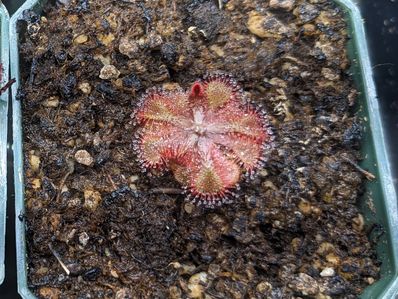Selecting appropriate and safe soil for Sundews can be a challenge when you are just getting started. Sundews have specific requirements for potting media that can affect their health. In this guide, I will list all the information needed to get the best soil for your Drosera.
Sundews require soil that has no nutrients, preserves moisture, and proper drainage. Sphagnum moss, peat moss, perlite, and silica sand are common ingredients for carnivorous potting media for Drosera.
When I first started growing carnivorous plants, I did not know about their soil consideration. Most plants grow in almost any soil, but Sundews are special, standard potting mixes won’t do.
After research and personal experience caring for my plants, I have learned how to grow Sundews, Pitcher plants, and Venus flytraps.
In this guide, I will help you select the suitable soil for your Sundew and decide whether to make it yourself or buy it online. I have included some links to online shops to make it easy for you.
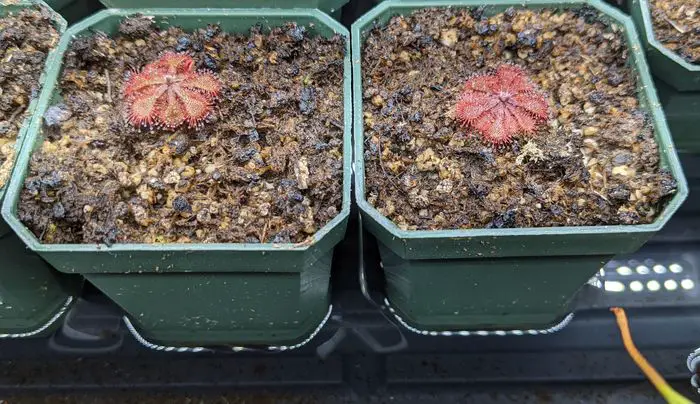
Suitable Potting Media for Sundews
Sundews are very unique plants and like most carnivorous plants, they have very specific requirements.
Drosera are extremely sensitive to the minerals you find in most soil and water. Nutrients present in the soil can kill Sundews.
Sundew plants thrive when planted in low-nutrient environments.
Carnivorous plant soil is suitable for growing Sundews. The soil is commonly made up of a combination of pure peat moss, long fiber sphagnum moss, silica sand, or perlite. The soil must not contain nutrients and requires proper drainage.
Carnivorous plant soil for Drosera is commonly made up of these ingredients:
- Long-fibered sphagnum moss
- Peat moss
- Silica sand
- Perlite
All of these elements must be completely pure and without any additives. Most gardening stores sell Miracle Gro peat moss which is loaded with fertilizers and will kill your Drosera.
You can buy online carnivorous plant soil which is completely safe for Drosera. I have used a couple of different soil mixes over the years with my sundews, venus flytrap, and pitcher plants. Here are the links to some I have used in the past and worked great.
The hyperlinks are affiliate links that will take you to Amazon.com. You can check the prices there, but most soil bags cost less than $20.
It is also possible to make Sundew soil at home by following some general recipes I have listed below. Making the soil is easy and very inexpensive.
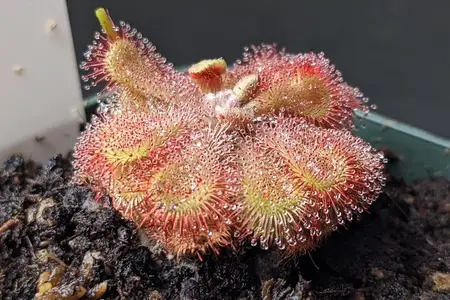
My Drosera Natalensis Growing in Carnivorous Plant Soil (a combination of peat moss and perlite)
Sundew Soil Recipes with Ingredient List
If you end up buying premade carnivorous plant soil mixes, that guarantees the soil is completely safe for your Drosera. Making your own soil is a great option too but you must ensure to be extra careful choosing the ingredients as mistakes can ruin your soil mixture.
Each element you use to make the sundew soil must be completely pure; it can’t contain any nutrients or fertilizers. Any typoes of additives will ruin the mixture and harm your plant.
When you buy the ingredients always ask: does it have fertilizers? any additives? The answer should be resounding “no”.
The pictures below are some examples of nutrient-free perlite and peat moss:
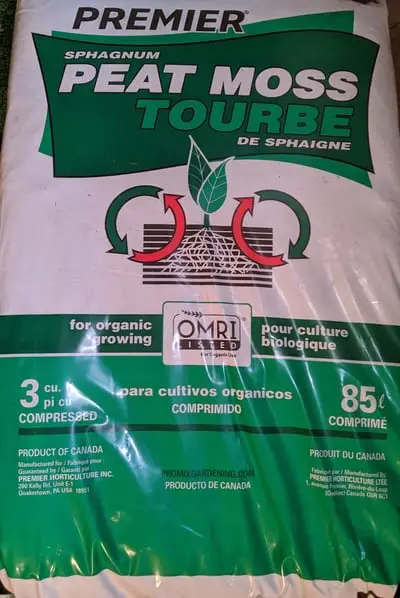
Pure Peat Moss 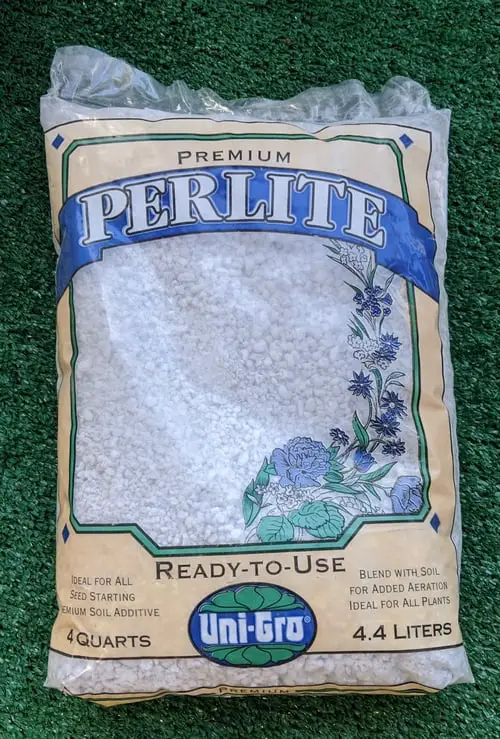
Pure Perlite
These are some excellent examples of Sundew potting media recipes:
- 3:1 Long-fibered sphagnum moss and silica sand
- 3:1 Long-fibered sphagnum moss and perlite
- 2:1 or 3:1 Peat moss and perlite
- 2:1:1 Peat moss, sand, and perlite
Less optimal options:
- 100% long-fibered sphagnum moss
- 100% peat moss
You can plant Drosera in pure moss, but it is not optimal. Pure moss contains no additives and retains moisture, which is suitable for these plants. However, pure moss does not offer enough drainage. Many experienced growers can pot Sundews in pure moss with success, but this is not always the case when you are getting started.
Make Sundew soil by combining one type of moss with sand or perlite. For example, you can employ a 3:1 ratio of peat moss and perlite. Or a 3:1 ratio of long-fibered sphagnum moss with sand. The ratio do not have to be exact, but including sand or perlite is very beneficial.
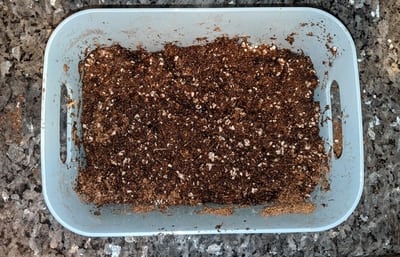
For best results, avoid employing pure peat or sphagnum moss. Instead, add some perlite or silica sand to help break up the soil, prevent compression, and promote growth.
Perlite or sand in the soil can make a big difference when growing carnivorous plants. They prevent root rot, provide aeration, and preserve the ground for more seasons.
The recipes on the list are some ideas for soil mixes I have used. The main priority is to get the right ingredients. The ratios I described are not as critical. If you do use silica sand or perlite, make sure a combination of such accounts for at least 20% of the mixture. That way you will be able to observe all the positive effects.
Sundew Planting Instructions: Potting and Repotting
Sundews do not need to be repotted every season or every year. These plants can live happily and thrive in the same container for a few years.
Repotting Sundews into fresh soil every 2 years helps promote growth and prevent rotting. The ultimate season to transplant drosera is in early spring or during dormancy.
Materials to Pot a Sundew
Make sure you have the correct soil, water, tray, and pot before you get started.
Soil: Employ carnivorous plant soil. You can buy it or make it with the instructions from this article.
Water: Use pure water with no nutrients or additives. Distilled water, reverse osmosis water, and rainwater are safe alternatives. I buy distilled water at the grocery store for about $1 a gallon.
Pot: As a general rule select glazed ceramic, plastic, and resin pots for Sundews. Smaller Sundews grow well on 3-4 inch containers while larger plants prefer 5- 10 inch pots. The pots must contain enough drainage holes. For more information on choosing a container, check out this guide: How to Select Pots for Sundews.
Tray: Get a plastic tray to use for watering. The height of the tray should be at least 1/3 of the size of the pot.
You can read through the steps below or watch my YouTube video to see how I plant some brand new Sundews I bought last year: https://youtu.be/HKmKra-c-Kk
Sundew Planting Instructions
- Gather the carnivorous plant soil, a pot, a tray, and pure water.
- Use a large container to mix the soil and moisten it with pure water. Make sure is completely humid throughout and set aside.
- If your plant is in old soil, use your hands to loosen up the media on the edges of the pot.
- Turn the pot upside down while holding the top of the pot with your hand (preventing the plant from falling to the ground)
- Gently, pull the plant and the soil out of the container.
- Use more water to remove as much of the potting media as possible. For best results, use a spray bottle.
- Trim any dead foliage. Bare root plants are easy to trim.
- If you employ peat moss, place the humid moss in the pot, make a hole in the soil and insert the plant. If you use sphagnum moss, grab a chunk of moss and surround the roots with it, then insert it all into the pot.
- Push the soil down gently with your fingers to check for any air gaps. Add more soil if needed. The ground must be set in place but should not be compacted.
- Water the pot from the top to set the soil.
- Pay extra attention to your plant in the next 1-3 weeks. Most plants will be down for a few weeks after planting. Make sure to avoid stress.
- Bonus: Use an air duster to remove any dirt that gets stuck in your Sundew. Use it carefully to avoid removing too much dew.
Sundew Growing Guide
Follow these care instructions to build a proper setup and keep your Sundew plant alive and happy
Soil: Employ nutrient-free and fertilizer-free potting media. Combining a mixture of peat moss or sphagnum moss with peat or silica sand is an excellent option. Do not use Miracle-Gro.
Lighting: Sundew plants need lots of light. Employ artificial or natural light and provide a minimum amount of 6 hours of light. Optimally, provide 8-12 hours of light.
Temperature needs: Temperarure requirements vary across different varieties of Sundews. Some Drosera undergo dormancy and need a change in climate during the summer or winter months.
Watering needs: Keep the soil humid at all times. Water often or employ the water tray method to keep the soil moist.
Feeding: Feeding is not required and outdoor plants capture their own food. When feeding, employ bugs and only feed once or twice a month.
Trimming: Trim dead leaves when necessary. Please do not cut off leaves until they have entirely dead.
Humidity needs: Keep humidity levels above 40% and 70%. A humidifier is a practical solution for dry indoor locations.
Use of Fertilizers: Avoid fertilizing to prevent damage.
Outdoor vs. Indoor growth: Assess if your indoor or outdoor environment is the most suitable for your Drosera plant. A good strategy is to research about their natural habitat and try to replicate the environment.
For more information, you can read my additional guides and articles on Sundews.


